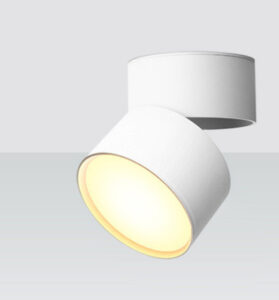In the realm of smart homes and energy-efficient solutions, sensor lights are a popular choice for their ability to combine convenience with security. However, like any technology, they may occasionally hiccup, necessitating a reset. Whether you’re faced with a sensor light that won’t turn off, fails to illuminate, or behaves unpredictably, a quick reset can often be the cure. This article delves into the nuances of resetting sensor lights, equipping you with the know-how to ensure they operate smoothly.
Recognizing the Signs for a Reset
Sensor lights are engineered to activate upon detecting motion, seamlessly blending security with energy savings. When they start acting up—staying lit without reason, not lighting up, or reacting inconsistently—it signals that a reset might be in order. Resetting can often resolve these glitches by refreshing the system.
Pre-Reset Precautions
Safety is paramount when dealing with electrical fixtures. To prevent any electrical mishaps, begin by turning off the power source to the sensor light, either at the circuit breaker or the fuse box. It’s also prudent to consult the light’s user manual for any model-specific reset instructions, ensuring you’re fully prepared for the task ahead.
Step 1: Disconnect Power
Initiate the reset process by disconnecting the sensor light from its power source. Switch off the power at your home’s circuit breaker or fuse box and wait approximately 30 to 60 seconds. This pause is crucial for ensuring the sensor light’s system is entirely powered down and ready for a reset.
Step 2: Reactivate and Reset
Following the brief power outage, restore power to the sensor light. This action alone can trigger a reset in many cases. However, some models may require additional steps, such as flipping the light switch on and off several times or pressing a dedicated reset button on the fixture. Specific instructions vary, so refer to the user manual for your particular model.
Step 3: Fine-Tune Settings
After resetting, your sensor light might revert to its original factory settings. You’ll likely need to recalibrate the light’s sensitivity, detection range, and illumination duration to suit your preferences. Adjustments are typically made directly on the fixture through designated dials or switches. Experiment with these settings to achieve the desired performance.
Addressing Persistent Issues
Should the sensor light continue to malfunction post-reset, consider these troubleshooting tips: Bulb Inspection: Confirm that the light bulb is in working order and properly installed.
Power Stability: Ensure the light’s power source is consistent and reliable.
Environmental Adjustments: Reposition the sensor or clear any obstacles that might trigger false detections or obstruct the sensor’s view.
Sensor Lights Care Tips
To minimize the need for resets, regular upkeep is advisable. Keep the sensor’s lens clean to avoid detection, periodically check for electrical or mounting problems, and ensure the fixture remains securely in place.
Wrapping Up
Mastering the reset process for sensor lights is a straightforward task that can greatly enhance the functionality. And reliability of your lighting system.




